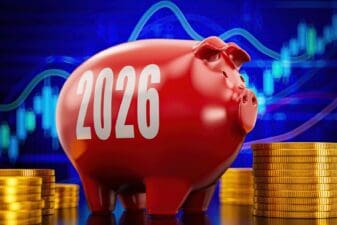For most shares in the FTSE 100, 2013 was a good year and investors have likely enjoyed capital gains and rising dividend income.
That makes me nervous about investing for 2014 and beyond, and I’m going to work hard to adhere to the first tenet of money management: preserve capital.
To help me avoid losses whilst pursuing gains, I’m examining companies from three important angles:
- Prospects;
- Risks;
- Valuation.
Today, I’m looking at banking company Barclays (LSE: BARC) (NYSE: BCS.US).
Track record
With the shares at 260p, the firm’s market cap. is £41,830 million.
This table summarises Barclays’ recent financial record:
| Year to December | 2008 | 2009 | 2010 | 2011 | 2012 |
|---|---|---|---|---|---|
| Revenue (£m) | 21,436 | 29,954 | 32,204 | 33,033 | 25,609 |
| Net cash from operations (£m) | 33,192 | 41,844 | 18,686 | 29,079 | (13,667) |
| Adjusted earnings per share | 47.6p | 22.32p | 28.15p | 25.65p | 31.95p |
| Dividend per share | 10.65p | 2.31p | 5.09p | 5.56p | 6.02p |
1) Prospects
It’s clear from the table that the business of banking is highly cyclical and I think that knowledge should frame any investment decision relating to the sector.
So, from an investment point of view, what tends to happen to cyclical shares as the economic cycle unfolds? For a start, the P/E multiple is likely to expand and contract counter-cyclically to earnings. So that means when earnings are high, like in 2008, the P/E ratio will likely be low as the market attempts to anticipate shrinking earnings ahead. Conversely, when earnings are low, like in 2009, the P/E multiple will likely be high as the market attempts to anticipate growing earnings ahead.
Similarly, the dividend yield will probably be at its highest when earnings peak, and at its lowest when earnings reach a nadir.
As we move through economic cycles, the P/E rating of the cyclical companies often gradually down-rates accordingly. Right now earnings and dividend payments at Barclays are recovering, so I’d expect the P/E rating to reduce gradually and the dividend yield to increase steadily. That process is going to drag on the share price.
This all means that investing in the cyclicals, like Barclays, requires a different approach to ‘normal’. You need to turn your reading of traditional value indicators on its head. When the P/E rating is low and the yield is high – when the value looks most attractive on well-know measures – it’s often a good idea to sell the shares to avoid an imminent plunge in the share price. When the P/E is high and the dividend yield low, the shares are worth researching with a view to buying.
So, within that framework, where are we now with Barclays? It’s hard to tell, of course, but relating the share price to net asset values can be informative. When economic cycles are peaking, banking shares tend to be selling above net asset values. When the cycle is down, banking shares can be selling at a discount to net asset values. In the recent interim management statement, Barclays declared an adjusted net tangible asset value of 323p per share, which means the current 260p share price is showing a 19% discount.
With restructuring and cost control measures in full swing, it seems likely that Barclays will further recover to close that net asset valuation gap, despite all the bad news currently swirling around the industry.
2) Risks
Banking shares tend to be early movers in macro-economic recoveries. That means there’s a risk that the big annual share-price movements have finished for banking shares in this cycle. Macro-economic news is becoming increasingly good. We are heading towards the next cyclical peak and banking shares will start to adjust to accommodate peak earnings again, as I’ve described above, although that earnings peak could yet be years away.
As far as I’m concerned, there’s another big risk involved in bank investing: there is not a hope on this earth that I’ll ever really know what’s going on in the bank’s business until after it has happened. By then it’s too late from an investment perspective. Banks are definitely outside my circle of investing competence. My suspicion is that many other private investors will feel similarly after trying hard to analyse the prospects of public limited banking companies.
3) Valuation
City analysts following Barclays expect forward earnings to cover the dividend about 2.8 times in 2014. At today’s share price the forward P/E rating is 8.5 and the dividend yield 4.2%. Remember, it’s best to read these traditional value indicators differently for cyclical companies.
The shares are currently trading around 81% of the firm’s adjusted tangible net asset value.
What now?
To me, banks like Barclays are less attractive than they were a few years ago, around 2009.
I think there’s still mileage in investing in Barclays, but banks can be such complex beasts to analyse that it’s hard to ensure that we are buying good value.







